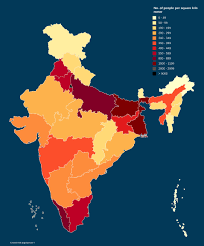Population Density Regulation – Zoology Notes – For W.B.C.S. Examination.
জনসংখ্যার ঘনত্বের নিয়ন্ত্রণ – প্রাণিবিদ্যা নোট – WBCS পরীক্ষা।
The increase in population is not infinite, since the carrying capacity of the environment always imposes a restriction upon it.Continue Reading Population Density Regulation – Zoology Notes – For W.B.C.S. Examination.
Thus, after reaching the carrying capacity level, the population density tends to fluctuate above and below this level and such fluctuation tend to give some stability to the population. The nature of the processes that regulate the numbers of plants and animals is a major problem of population ecology. Krebs (1985) presented an account of this subject.
1. Nature of factors that influence population density:
Population density can only be increased by natality or immigration and decreased by mortality or emigration. These factors may be density dependent or density independent in their effects.
Density-dependent factors increase in their proportional effect as a population increases and includes competition and predation. For example, rate of population growth is increasingly depressed by intra-specific competition as density is increased. Inverse density dependence also occurs if the intensity of the factor decreases proportionately as density increases.
Density independent factors do not vary systematically in their effects as density changes. Abiotic environmental factors are often density independent but not always so Cold weather in tropics is a factor of this type.Both density-dependent and density independent factors may interact to determine observed densities. These factors also play important role in population dynamics.
2. Self-regulation of population:
Intraspecific density-dependent interactions regulate many populations in the laboratory, and in that sense these are self-regulating. Accumulation of waste products may depress population growth which is also self-regulation. Social behaviour may also be self-regulatory. Many species have groups of individuals or individuals that defend food or breeding partners in a territory. Death or failures to mate are density-dependent and can regulate population density.
3. Immigration, emigration, and migration:
Besides natality and mortality, immigration— one-way inward movement, emigration-one-way outward movement and migration-periodic departure and return, also affect population density.
Please subscribe here to get all future updates on this post/page/category/website


 +919674493673
+919674493673  mailus@wbcsmadeeasy.in
mailus@wbcsmadeeasy.in







































































































